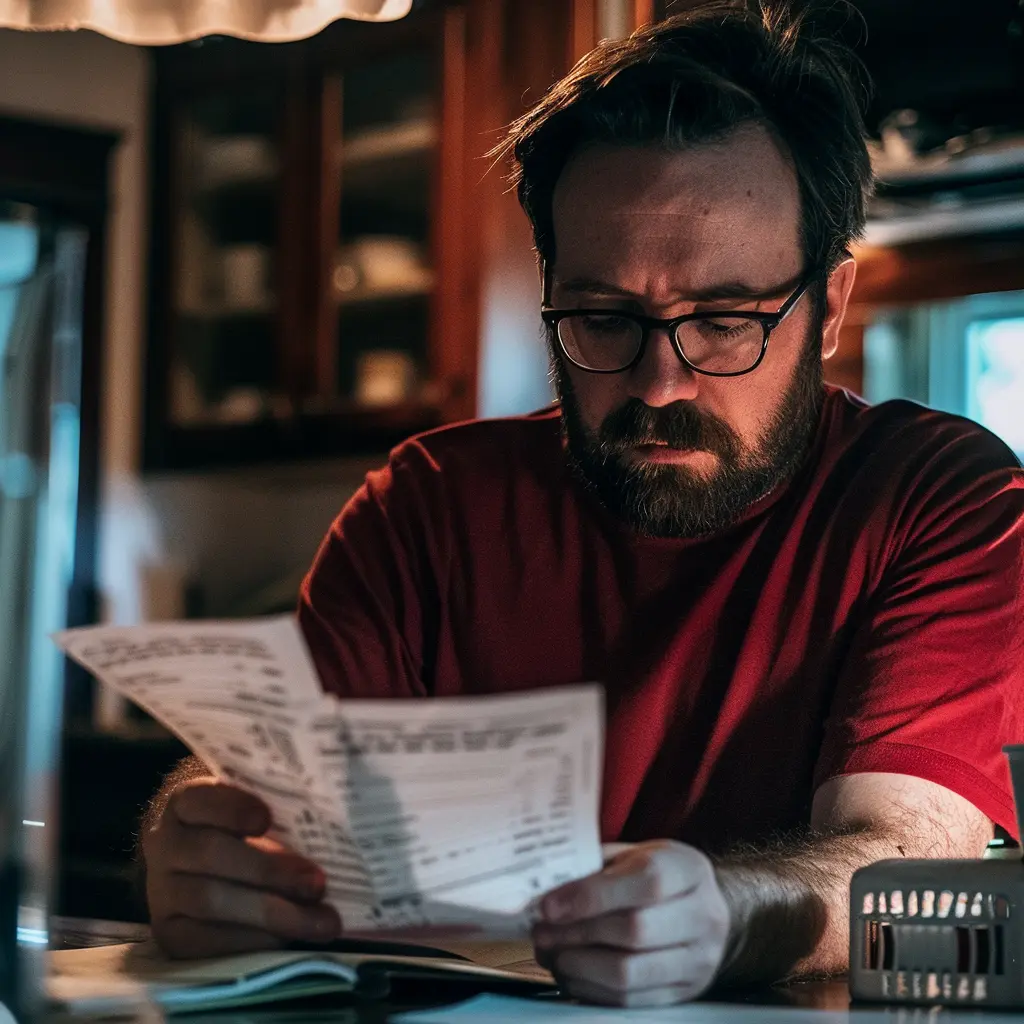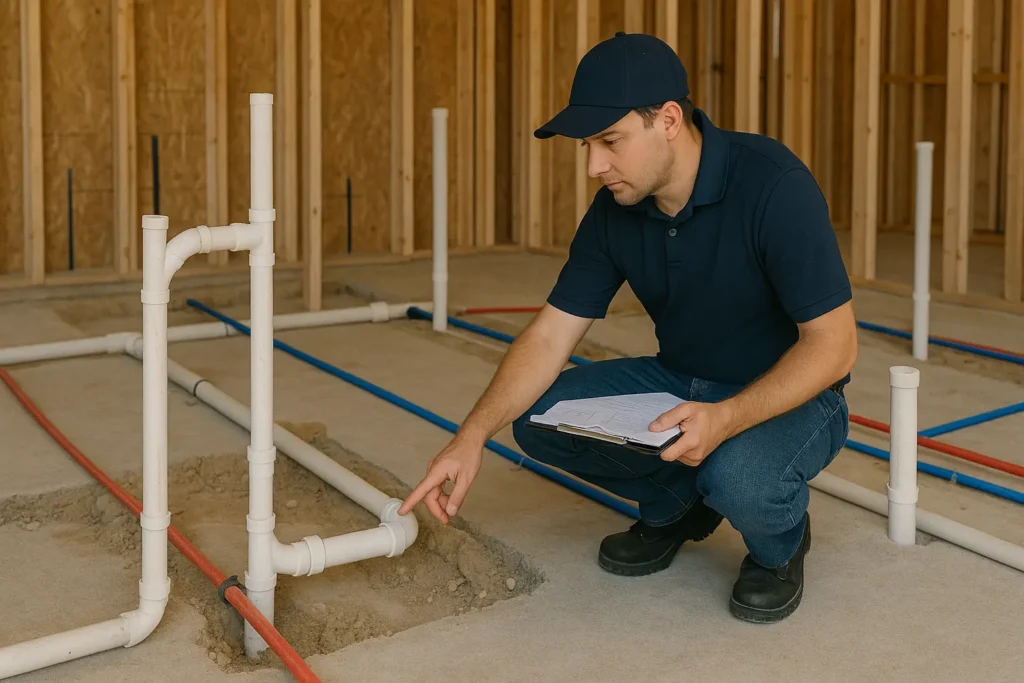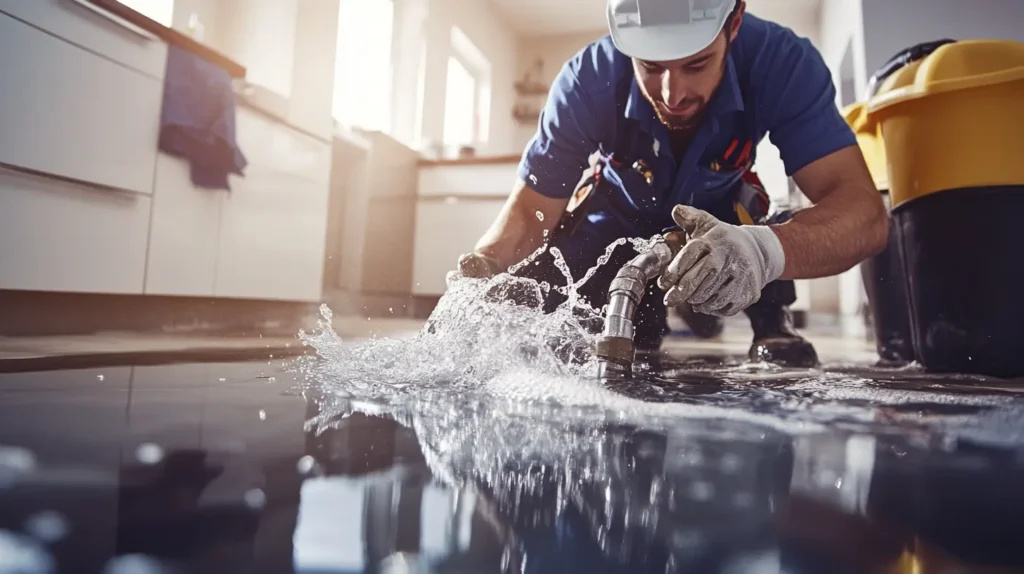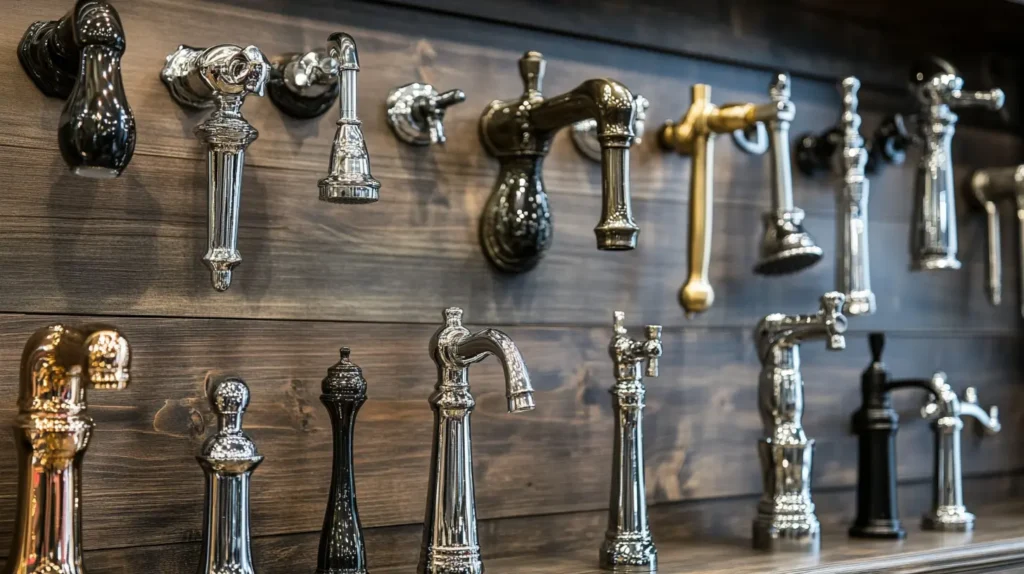When to Schedule Your Next Plumbing System Inspection: A Step-by-Step Guide
Living in Northeast Florida, with its charming landscapes and coastal climate, also means taking good care of our homes to withstand the elements and everyday use. One crucial aspect of this maintenance is ensuring your plumbing system is in top shape. Kingdom Based Plumbing is here to guide you through when and how to schedule your next plumbing inspection, ensuring everything flows smoothly in your home.
Understanding the Importance of Plumbing Inspections
Why Inspect?
Plumbing issues can be silent but deadly, leading to costly repairs if unnoticed. Regular inspections can preemptively identify potential problems like leaks, blockages, and wear and tear that could otherwise lead to severe water damage and high repair bills.
Step-by-Step Guide to Scheduling Your Plumbing Inspection
Step 1: Recognize the Signs for a plumbing system inspection
Knowing When Your Plumbing System Needs an Inspection.
Every homeowner should be vigilant about the signs that indicate a plumbing system inspection is due. Often, the clues are subtle, but early detection can prevent costly repairs and significant inconvenience. Here’s a deeper look into the common indicators that suggest it’s time to call a professional like Kingdom Based Plumbing for a thorough check-up.
- Unexplained Increase in Water Bills
An unexpected rise in your water bill is one of the most straightforward indicators that something is amiss with your plumbing. This could be caused by hidden leaks, either within the walls or underground, where they’re not easily visible. These leaks can lead to significant water loss — a drip per second can waste up to 3,000 gallons a year! If your water usage habits haven’t changed but your bill has spiked, it’s a clear sign that an inspection is necessary.

- Persistent Unpleasant Odors
If there is a persistent foul smell emanating from your drains or fixtures, it could indicate a problem in your sewer system. This could be as simple as traps drying out or as serious as a breach in the sewer line. Such odors are not only unpleasant but can also pose health risks, making it essential to address them promptly. These smells often result from blockages that can escalate into more severe issues, such as sewage backups.
- Recurring Clogs or Slow Drains
While occasional clogs can be common, recurring or multiple simultaneous clogs can suggest a more significant issue within your plumbing system. Slow drains across different fixtures suggest a systemic problem, possibly a buildup or blockage in your main sewer line. Frequent clogs can also indicate improper venting or gradients in your piping system, which are less obvious but can cause considerable problems.
- Sounds of Water Running When All Taps Are Closed
Hearing water running when no tap is open is a classic sign of a leak somewhere in your system. This could be in the service line from the street to your home or in the pipes in your walls. It’s crucial to investigate these sounds promptly as they can indicate water is being wasted somewhere within your property, potentially causing damage to the structure of your home and leading to mold growth.
Step 2: Decide on the Type of Inspection
Choosing the Right Inspection for Your Plumbing System
To maintain the health of your plumbing system and prevent potential disasters, it’s crucial to understand the types of inspections available and decide which one suits your needs best. Kingdom Based Plumbing offers two primary types of inspections: visual inspections and camera plumbing inspections. Each serves a unique purpose and provides valuable insights into the state of your plumbing.
Visual Inspections: Essential for Routine Checkups
A visual inspection is the most basic form of plumbing checkup, primarily focusing on the exterior of your plumbing fixtures, pipes, and associated appliances. During a visual inspection, a plumber will check for obvious signs of distress, such as leaks, rust, and wear on visible pipes and fixtures. They will also assess the condition of faucets, shower heads, toilets, and other fixtures for proper operation.

The benefits of a visual inspection include:
Quick Assessment: It provides a fast overview of the condition of your plumbing system.
Cost-Effective: Since it is less comprehensive, it tends to be more affordable.
Identifies Surface Issues: Helps in spotting obvious defects that can be quickly fixed.
Visual inspections are ideal for routine maintenance and are recommended at least once a year to ensure that all components of your plumbing system are in good working order.
Camera Plumbing Inspections: The Deep Dive into Your Pipes

When deeper issues are suspected, such as blockages or damage that is not visible to the naked eye, a camera plumbing inspection is the best course of action. This type of inspection involves the use of a specially designed waterproof camera that is inserted into your plumbing system. The camera is fed through your pipes and provides real-time video feedback, allowing the technician to see inside your entire piping system.
Camera inspections are particularly useful for:
Identifying Hidden Leaks: These might be located in underground pipes or within walls.
Spotting Root Intrusions: Common in areas with large tree populations, where roots can grow into pipes.
Detecting Corrosion and Buildup: Helps in assessing the internal condition of pipes, spotting potential failures before they occur.
The detailed visualization provided by a camera plumbing inspection is invaluable for diagnosing complex issues that cannot be detected through a visual check. It is particularly recommended if you are experiencing recurrent plumbing problems, are considering a home renovation that involves plumbing, or are planning to purchase a home.
When to Choose Which Inspection
Visual Inspection: Annually, or when you have not noticed any significant issues but want to maintain a routine check.
Camera Inspection: If experiencing specific problems like unexplained blockages, or as part of a pre-purchase home inspection.
Step 3: Schedule at the Right Time
Timing Your Plumbing System Inspection
Effective maintenance of your plumbing system not only requires understanding what types of inspections are available but also knowing the optimal times to schedule them. Here at Kingdom Based Plumbing, we emphasize the importance of timing your inspections to maximize their effectiveness and prevent potential issues from turning into costly repairs. Below, we explore the ideal times to schedule a plumbing inspection.
- Annually: Routine Maintenance
Scheduling an annual plumbing inspection is crucial for maintaining the health of your plumbing system. Think of it as a regular health check-up for your home—a preventative measure to ensure everything is functioning as it should. During this routine check, a plumber can identify small issues before they escalate into major problems, such as minor leaks or early signs of pipe corrosion. Regular inspections can also help extend the life of your plumbing fixtures and pipes, ensuring everything operates efficiently and effectively.
Benefits of Annual Plumbing System Inspections:
Early detection of potential problems.
Prevention of costly emergency repairs.
Ensuring optimal operation and efficiency of your plumbing system.
- When Buying a Home: Pre-Purchase Inspection
Before finalizing the purchase of a home, it’s essential to have a comprehensive plumbing inspection conducted. This inspection can reveal hidden issues that may not be immediately apparent, such as aging pipes, poor water pressure, or outdated plumbing that doesn’t meet current standards. Knowing the state of the plumbing system can help you make an informed decision about the purchase or negotiate repair credits with the seller.
Importance of a Pre-Purchase Inspection:
Uncovers potential costly repairs.
Provides leverage in purchase negotiations.
Ensures safety and compliance with local building codes.
- After Severe Weather: Post-Storm Assessment
In Florida, where hurricanes and severe storms are a regular part of life, post-storm plumbing inspections are crucial. Extreme weather can shift the ground, potentially damaging underground pipes. It can also lead to blockages from debris or damage to plumbing fixtures from high winds or falling objects. Scheduling an inspection after a major storm can help ensure that your plumbing system hasn’t sustained damage that could lead to serious issues like water leaks or sewage backups.
Why Post-Storm Inspections are Essential:
Identifies damages caused by shifting ground or debris.
Prevents water damage from undetected leaks.
Ensures the safety and functionality of your plumbing system after extreme weather.
Step 4: Prepare Your Home
Ensure all areas around your plumbing are clear and accessible. This includes moving any furniture or stored items that might obstruct access to main plumbing lines.
Step 5: Choosing the Right Professional
Schedule an appointment with us and get your Plumbing system thoroughly inspected. We use advanced tools such as plumbing inspection cameras for the most accurate assessments.
Best Practices for a Thorough Plumbing Inspection
Use of Technology: Utilizing a plumbing camera inspection can significantly enhance the accuracy of the inspection, allowing for a real-time view of the inside of your pipes.
Follow-Up: Always discuss the findings with your plumber. If issues are detected, schedule a follow-up for repairs or a more detailed inspection if needed.
Documentation: Keep records of all inspections and repairs for future reference and to increase the value of your home.
FAQs on Plumbing Inspections
How much is a plumbing inspection?
The cost can vary depending on the extent of the inspection and the size of your home but typically ranges from $100 to $400.
How to test plumbing for inspection?
Testing usually involves a pressure test to check for leaks, dye tests in drains to look for seepage, and camera inspections to visually verify the condition inside the pipes.
How much does a plumbing camera inspection cost?
While more expensive than a basic visual inspection, prices for camera inspections can range from $100 to $800, based on the complexity and length of the pipes.
How long does a plumbing inspection take?
A typical home inspection can take between one to three hours, with larger homes or more in-depth inspections taking longer.
Conclusion.
Scheduling regular plumbing inspections might not be the most glamorous aspect of home maintenance, but it is undoubtedly one of the most crucial for keeping your property safe and sound. With Kingdom Based Plumbing, you ensure that expert hands are taking care of your home, using the latest technology and thorough techniques to safeguard your plumbing system. Keep these tips in mind and schedule your next inspection today to prevent any unwelcome surprises down the line!



